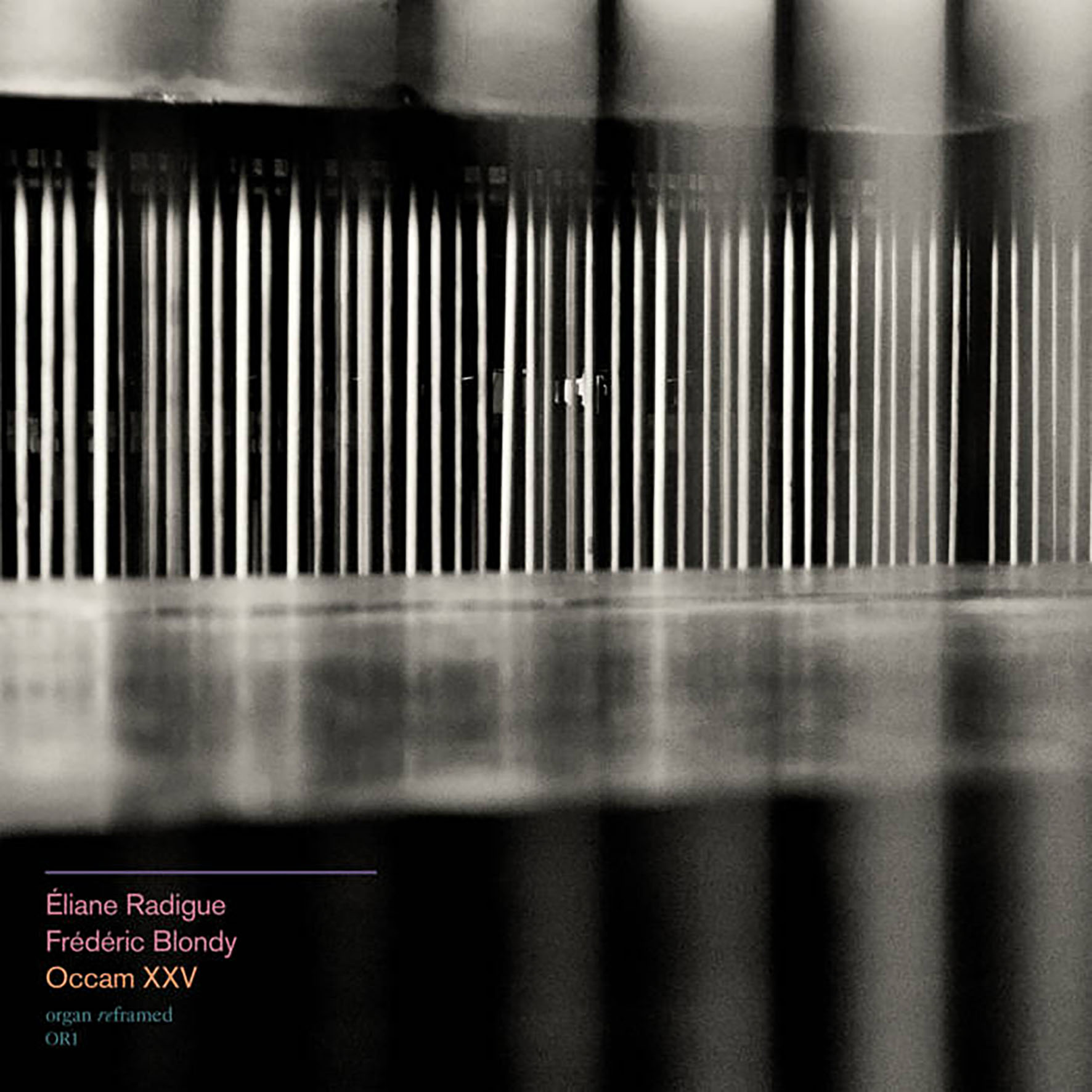
This is the debut album for Claire M. Singer's Organ Reframed imprint, which will now enable home listeners to experience a bit of her singular music festival of the same name. While the festival itself has been going on since 2016, I can understand why Singer did not make the leap into releasing albums until now, as I imagine it is quite a challenge to translate the site-specific acoustic pleasures of Union Chapel's famed hydraulic organ onto a CD. Also, solo organ albums have only recently begun to come into vogue (and I suspect Singer's efforts played a key role in that). Thankfully, the stars seem to now be in proper alignment for such an endeavor, as artists like Kali Malone, Lawrence English, and Sarah Davachi have spent the last few years turning adventurous ears organ-ward and the reigning queen of minimalism (Radigue) is currently in the prime of her "acoustic instrumentation" era. Unsurprisingly, composing for organ has not resulted in a newly bombastic and maximalist Radigue, as she remains unswervingly devoted to Occam's guiding principle of "simple is always better." In fact, this album is probably a strong contender for one of Radigue's most minimal compositions to date. That may test the patience of some casual Radigue listerers, but those attuned to her slow-burning drone majesty will find much to love, as she is in peak form here.
This is not the first album in Radigue's "Occam Ocean" series that I have heard, but this is the first time that I learned about the origin of its curious title. Naturally, the "Occam" part is a reference to William of Ockham's timeless razor (the law of economy), but I did not know that the "ocean" bit was because Radigue is drawing much of her inspiration from water and waves these days. That makes sense and knowing that reveals further depth to this series. Also, given Radigue's history with Buddhism and its focus on mindfulness and the interconnectedness of all things, this series can be viewed as a sort of an artistic culmination of the themes and philosophies that have shaped her life as a whole. In more concrete terms, Radigue's recent work is driven by the "transcendent beauty" that she finds in the "micro beats, pulsations, harmonics, and subharmonics" that result when sound waves interact. Another central belief of Radigue's is that written music is an abstraction and that it is the performer that ultimately breathes life into it She also notes that "no two performers, playing the same instrument, have the same relationship with that instrument," so it was a significant choice that return collaborator/ONCEIM director Blondy was chosen to perform the piece.
Speaking of Blondy, I am quite curious about how technically demanding this piece was to play. My guess is "very," as it could easily be mistaken for a single sustained and droning chord with casual listening, but closer listening reveals that it is endlessly evolving and constantly creating subtle new sonic phenomena despite it being damn near imperceptible to tell when new notes are being added. In fact, the entire mood of the piece sneakily undergoes at least two dramatic transformations over the course of its 44 minutes, slowly moving from a stark, almost futuristic-sounding introduction of shuddering bass throbs towards a surprisingly hallucinatory finale of blearily celestial-sounding drones and insectoid whine. In between those two poles, there are passages that call to mind a surveillance beam slowly sweeping across a desolate wasteland or a gorgeous slow-motion sunrise and it never feels anything less than totally organic and seamless. And, of course, the piece's unhurried, meditative journey continually reveals additional subtle layers of harmonic complexity with deep listening. Given the near-geologic timescale and the ultra-minimal nature of this piece, it probably is not the ideal introductory Radigue album for the curious, but those already attuned to her work will likely be spellbound by the exacting and patient virtuosity on display (I certainly was). Occam XXV sets the bar intimidatingly high for whoever gets tagged for Organ Reframed's second release.
Samples can be found here.


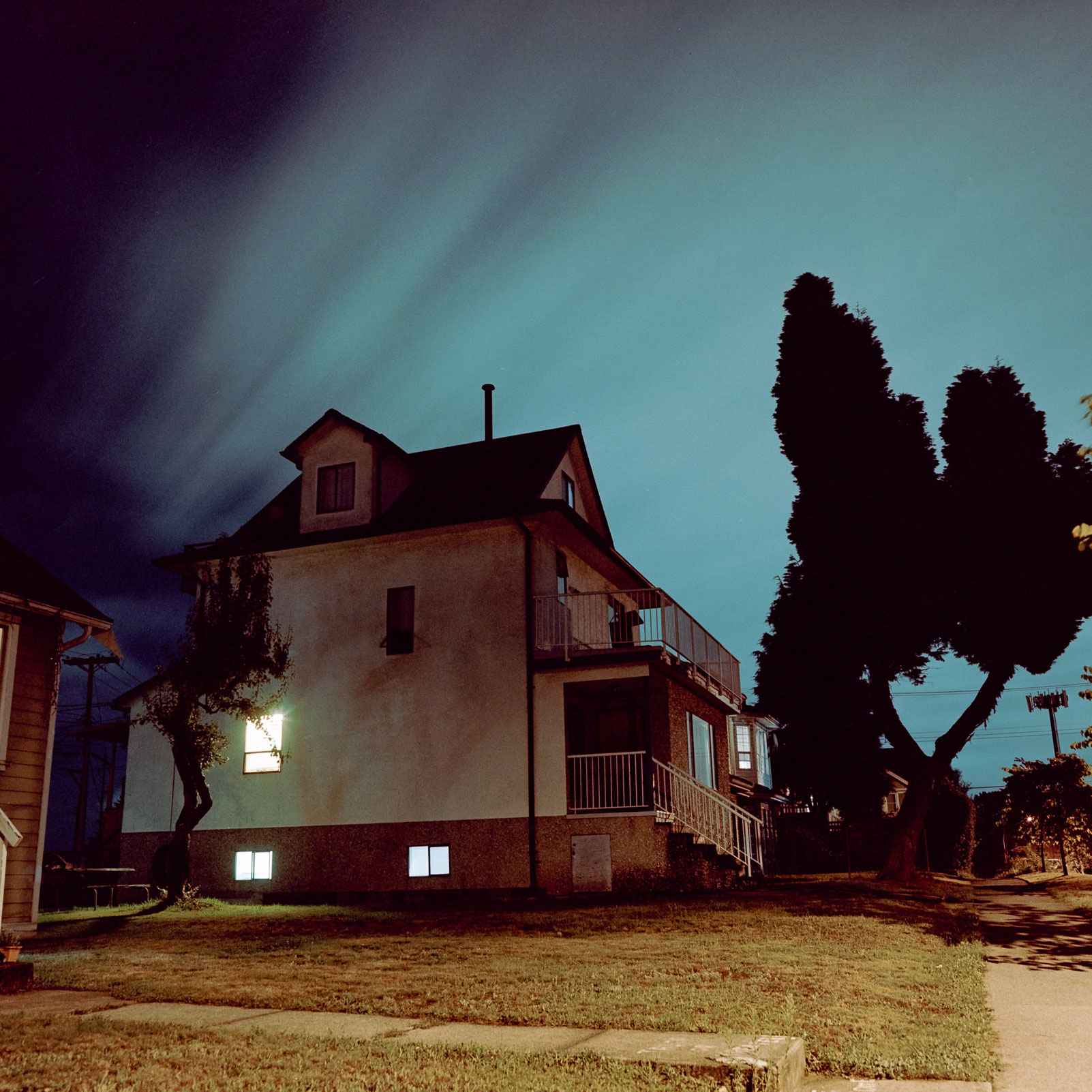
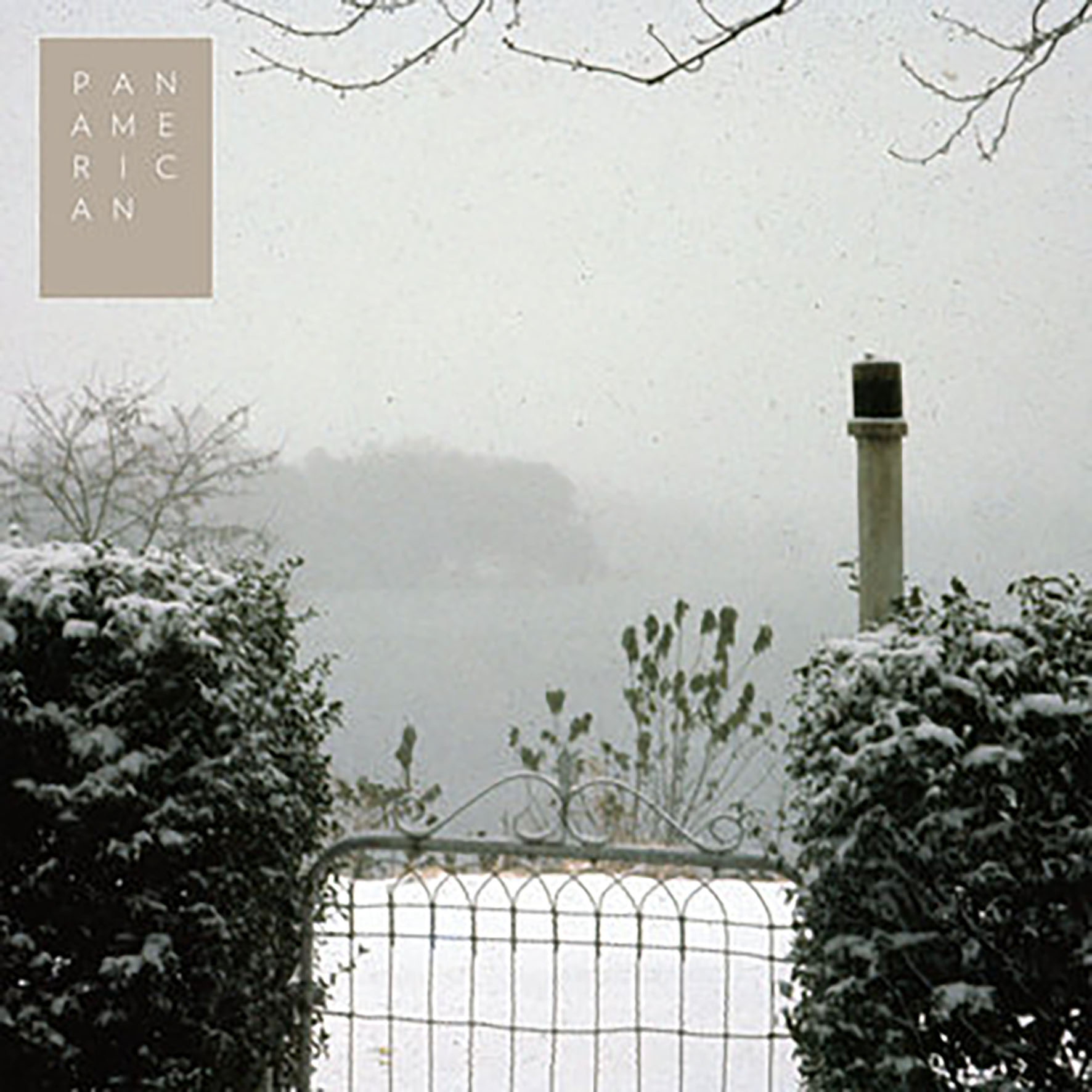 This latest full-length from Mark Nelson's long-running and unpredictably shapeshifting project is a collection of understated, near-ambient solo guitar instrumentals that Kranky describes as the culminating release of the composer's "romantic minimalism" side. It certainly is a languorously meditative and unrepentantly lowercase suite of songs, blurring the lines between an "ageless, scarred" Americana and dreamlike ambient drift. Significantly, the album was recorded during the first summer of the pandemic, as Nelson views these songs as a sort of "'lighthouse music,'" radiance cast from a stable vantage point, sending 'a signal to help others through rocks and dangerous currents.'" Given its gently minimal, near-ambient "lone guitar in the fog" aesthetic, The Patience Fader is likely to be something of a polarizing release: it falls dangerously close to calming Windham Hill-style prettiness a couple of times, but it can also feel incredibly poignant and sublime if one chooses to listen deeply enough. While it feels weird to describe music this quiet and slow-moving as "a bold move," it is exactly that. It would have been much easier for Nelson to revisit familiar, more fan-friendly territory than to attempt to convey something profound and ineffable while blearily hovering at the edge of perception like a ghost.
This latest full-length from Mark Nelson's long-running and unpredictably shapeshifting project is a collection of understated, near-ambient solo guitar instrumentals that Kranky describes as the culminating release of the composer's "romantic minimalism" side. It certainly is a languorously meditative and unrepentantly lowercase suite of songs, blurring the lines between an "ageless, scarred" Americana and dreamlike ambient drift. Significantly, the album was recorded during the first summer of the pandemic, as Nelson views these songs as a sort of "'lighthouse music,'" radiance cast from a stable vantage point, sending 'a signal to help others through rocks and dangerous currents.'" Given its gently minimal, near-ambient "lone guitar in the fog" aesthetic, The Patience Fader is likely to be something of a polarizing release: it falls dangerously close to calming Windham Hill-style prettiness a couple of times, but it can also feel incredibly poignant and sublime if one chooses to listen deeply enough. While it feels weird to describe music this quiet and slow-moving as "a bold move," it is exactly that. It would have been much easier for Nelson to revisit familiar, more fan-friendly territory than to attempt to convey something profound and ineffable while blearily hovering at the edge of perception like a ghost. An ear-opening collection of radio broadcasts, live performance recordings, and sketched works in progress from a prolific period in the life of this highly distinctive American composer. In the 1950s, Hovhaness was composing around 12 major works a year, in addition to extensive traveling for research and teaching. He may well have suffered from hypergraphia - an overwhelming urge to be constantly creating - and it is a wonder he found time to be married six times.
An ear-opening collection of radio broadcasts, live performance recordings, and sketched works in progress from a prolific period in the life of this highly distinctive American composer. In the 1950s, Hovhaness was composing around 12 major works a year, in addition to extensive traveling for research and teaching. He may well have suffered from hypergraphia - an overwhelming urge to be constantly creating - and it is a wonder he found time to be married six times.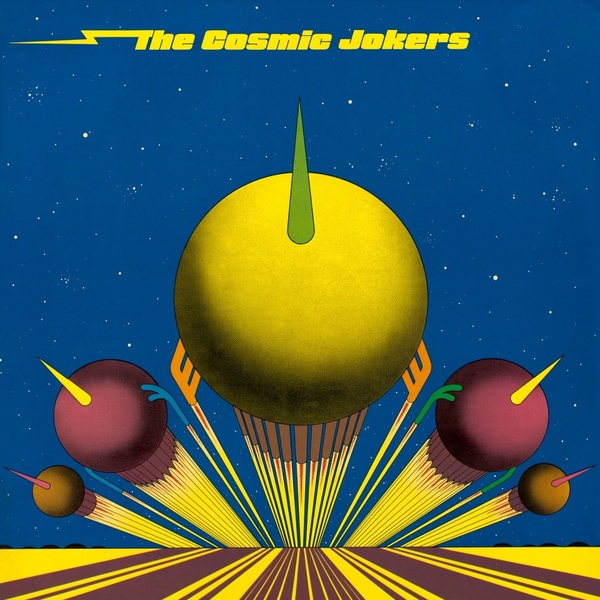 Over a series of acid-fueled all-night jam parties at Dierks Studio in 1973, Die Kosmischen Kuriere ("Cosmic Couriers") label musicians Klaus Schulze (Tangerine Dream), Harald Grosskopf and Jürgen Dollase (both of Wallenstein), Manuel Göttsching (Ash Ra Tempel), and Dieter Dierks assembled. The result spawned a cosmic barrage of stream-of-consciousness experimentation with immersive sound loops and kinetic rhythms, awash in interstellar guitar sorcery and sound effects. Unbeknownst to the musicians involved, this magic was captured on tape by label head Rolf-Ulrich Kaiser and Gille Lettmann. When a mysterious group called The Cosmic Jokers appeared on the label the following year, the affected musicians took legal action, dissolving the contracts effectively ending the label. Thankfully, the magic was committed to immortality and now exists in its space rock glory. With original vinyl pressings going for hundreds of dollars, this latest reissue -- fully licensed and remastered from the original analog master tapes at the original recording studio -- puts this essential listening in the hands of more listeners.
Over a series of acid-fueled all-night jam parties at Dierks Studio in 1973, Die Kosmischen Kuriere ("Cosmic Couriers") label musicians Klaus Schulze (Tangerine Dream), Harald Grosskopf and Jürgen Dollase (both of Wallenstein), Manuel Göttsching (Ash Ra Tempel), and Dieter Dierks assembled. The result spawned a cosmic barrage of stream-of-consciousness experimentation with immersive sound loops and kinetic rhythms, awash in interstellar guitar sorcery and sound effects. Unbeknownst to the musicians involved, this magic was captured on tape by label head Rolf-Ulrich Kaiser and Gille Lettmann. When a mysterious group called The Cosmic Jokers appeared on the label the following year, the affected musicians took legal action, dissolving the contracts effectively ending the label. Thankfully, the magic was committed to immortality and now exists in its space rock glory. With original vinyl pressings going for hundreds of dollars, this latest reissue -- fully licensed and remastered from the original analog master tapes at the original recording studio -- puts this essential listening in the hands of more listeners.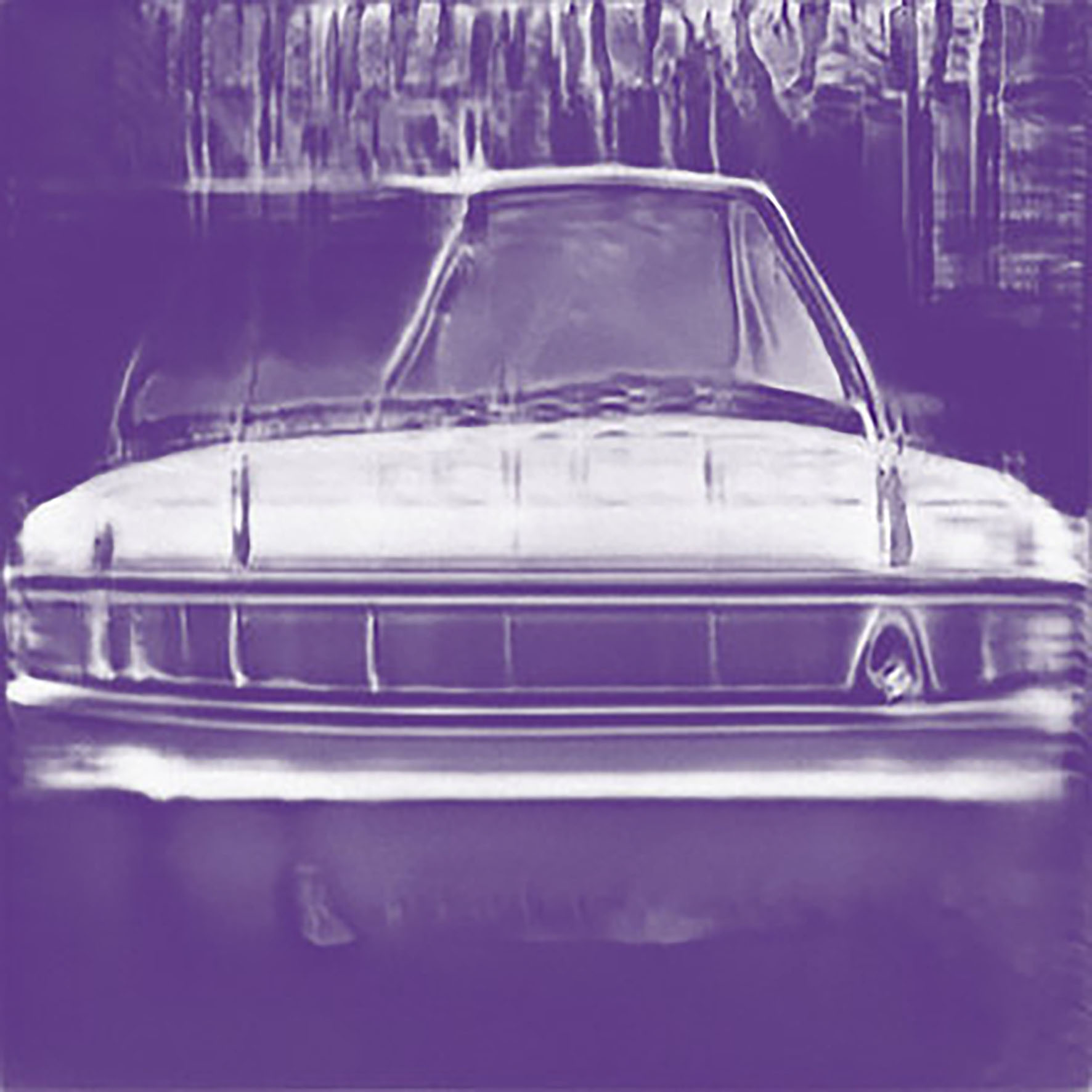 It is not quite accurate to say that Saint Abdullah completely reinvent their sound with each new album, but is fair to say that Mehdi and Mohammad Mehrabani-Yeganeh are far more interested to exploring meaningful new territory than with building upon their past successes. While that is certainly an admirable trait, it can also be a frustrating one, as I know Saint Abdullah will probably never fully return to the more industrial-indebted aesthetic of their earlier albums (which I love). On the bright side, that also means that every new Saint Abdullah album has the potential to blindside me with a bold leap forward into previously uncharted creative territory. In that regard, Inshallahlaland falls a bit short of being a particularly revelatory album as a whole, yet it does explore some characteristically intriguing and thoughtful themes and features quite a fascinating longform piece ("Glamour Factory"). For me, the appeal of Inshallahlaland begins and ends there, but that one excellent 20-minute sound collage is enough to make the album a significant release that fans will not want to pass over.
It is not quite accurate to say that Saint Abdullah completely reinvent their sound with each new album, but is fair to say that Mehdi and Mohammad Mehrabani-Yeganeh are far more interested to exploring meaningful new territory than with building upon their past successes. While that is certainly an admirable trait, it can also be a frustrating one, as I know Saint Abdullah will probably never fully return to the more industrial-indebted aesthetic of their earlier albums (which I love). On the bright side, that also means that every new Saint Abdullah album has the potential to blindside me with a bold leap forward into previously uncharted creative territory. In that regard, Inshallahlaland falls a bit short of being a particularly revelatory album as a whole, yet it does explore some characteristically intriguing and thoughtful themes and features quite a fascinating longform piece ("Glamour Factory"). For me, the appeal of Inshallahlaland begins and ends there, but that one excellent 20-minute sound collage is enough to make the album a significant release that fans will not want to pass over.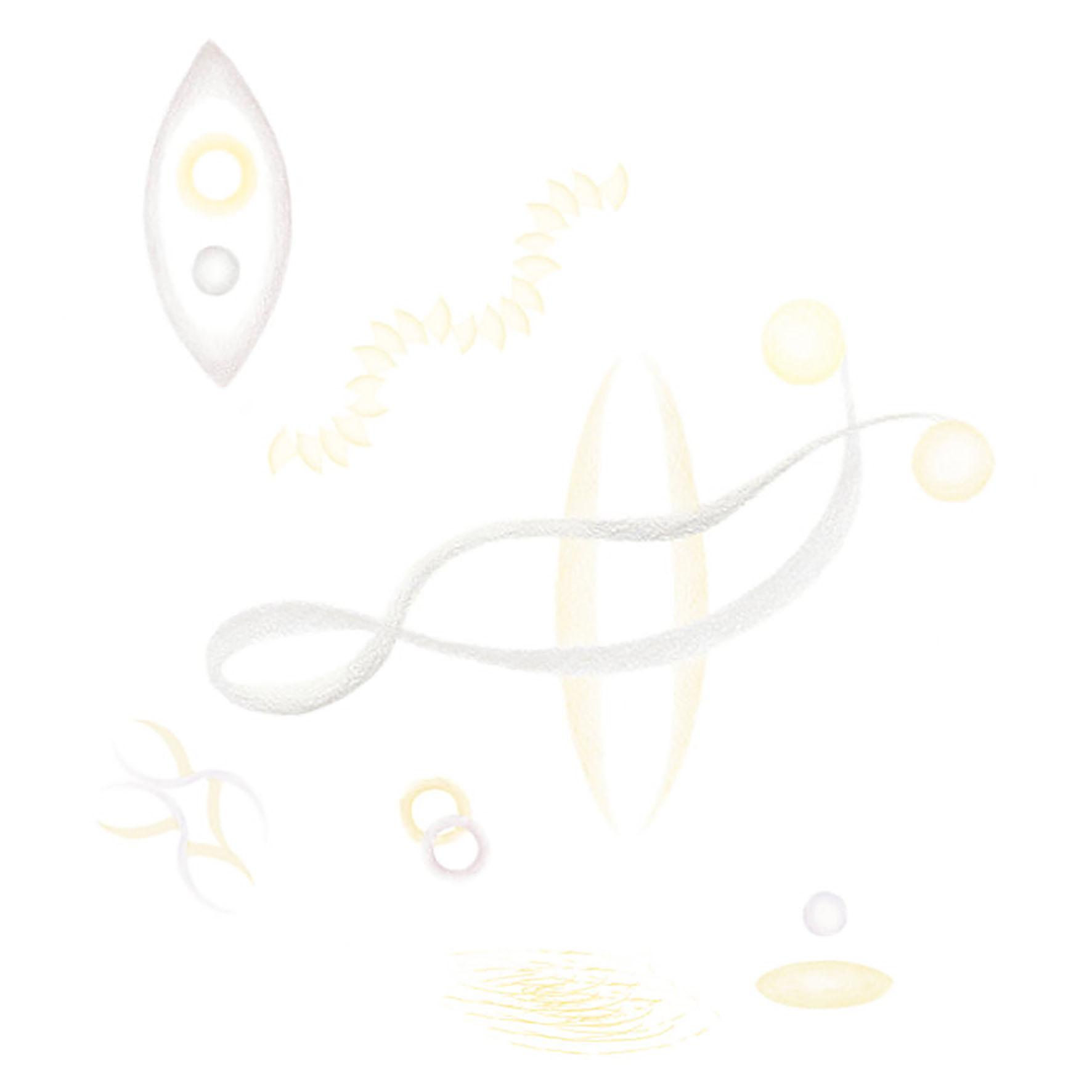 This Krakow-based composer's debut album was one of 2021's most pleasant late-year surprises, as Making Eye Contact With Solitude is a gorgeously warm and intimate gem of multilayered and masterfully textured psychedelia. Basta describes the album as a diaristic meditation on "domesticity, loneliness, repetitiveness, stubborn patterns of isolated minds and the sonic mysteries all around us" and cites the murderers' row of Cucina Povera, Félicia Atkinson, and claire rousay as key inspirations. While welcome shades of all three artists are certainly evident to some degree on these six songs, Basta's aesthetic already feels fully formed and distinctively her own. In fact, I suspect it will not be long at all before Basta regularly finds herself name-checked as an inspiration by other artists, as her unhurried and dreamlike phantasmagoria of rippling zithers, vividly textured field recordings, and enigmatic domestic sounds feels absolutely revelatory on the album's two strongest pieces.
This Krakow-based composer's debut album was one of 2021's most pleasant late-year surprises, as Making Eye Contact With Solitude is a gorgeously warm and intimate gem of multilayered and masterfully textured psychedelia. Basta describes the album as a diaristic meditation on "domesticity, loneliness, repetitiveness, stubborn patterns of isolated minds and the sonic mysteries all around us" and cites the murderers' row of Cucina Povera, Félicia Atkinson, and claire rousay as key inspirations. While welcome shades of all three artists are certainly evident to some degree on these six songs, Basta's aesthetic already feels fully formed and distinctively her own. In fact, I suspect it will not be long at all before Basta regularly finds herself name-checked as an inspiration by other artists, as her unhurried and dreamlike phantasmagoria of rippling zithers, vividly textured field recordings, and enigmatic domestic sounds feels absolutely revelatory on the album's two strongest pieces.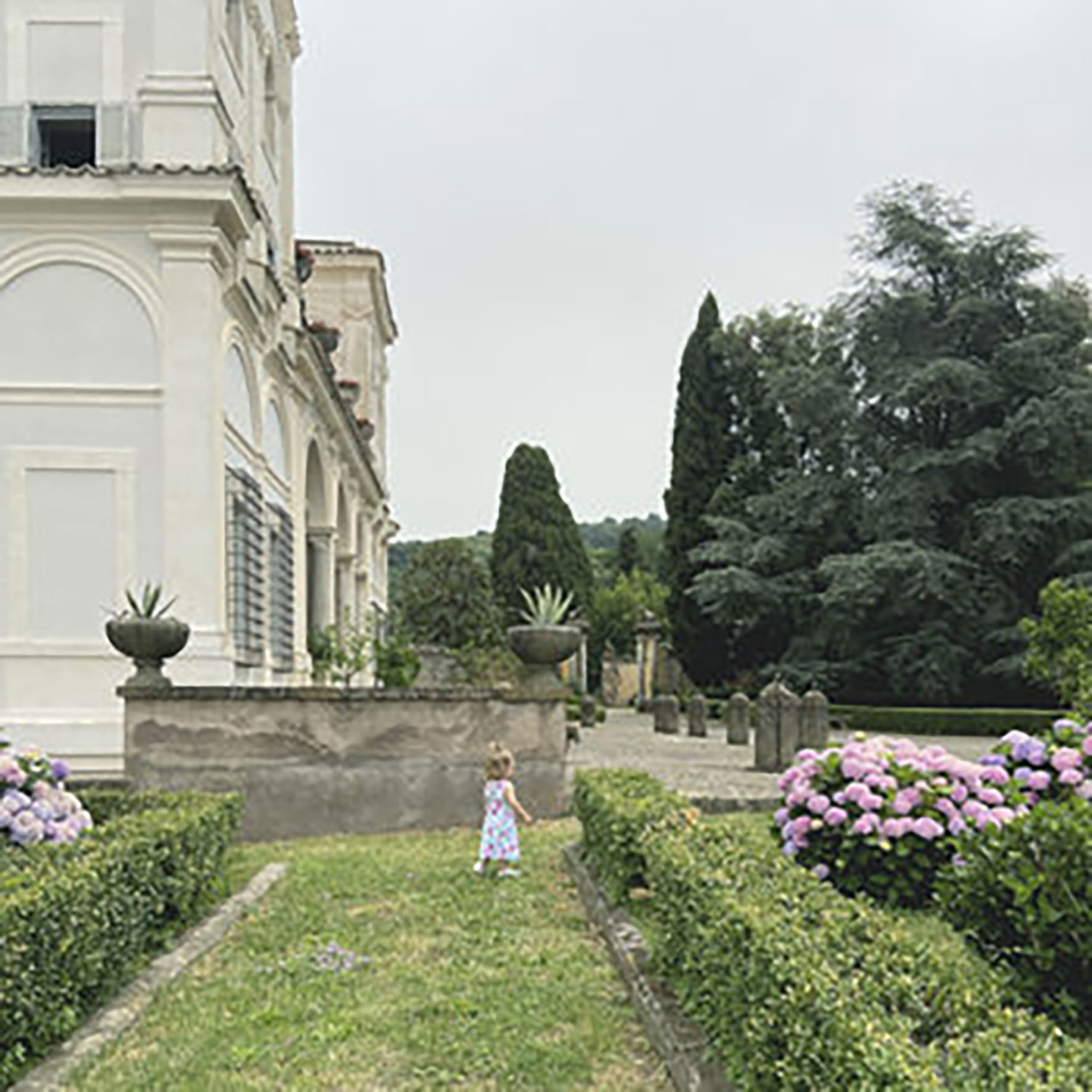 This latest release from Mogard is something of a modest one, as he describes it as "the result of experimentation with familiar and less familiar instruments available to me in the studio between 2019 and 2022." No further information is divulged about the album's "less familiar" elements aside from an interesting mention of reverb borrowed from the Inchindown oil tanks, which apparently hold the world record for longest reverberation time. If In a Few Places Along the River were a Lea Bertucci or Pauline Oliveros album, that expansive reverb would no doubt be a defining feature, but it seems like Mogard harnessed it in an more unusual and inventive way. The results are admittedly not quite top-tier Mogard (this is a digital-only release, after all), as this album captures him in stark, slow-burning drone mode rather than one of his more melodic and warm moods, but it is still solid enough to be satisfying, as the two bookends are impressively nuanced and substantial.
This latest release from Mogard is something of a modest one, as he describes it as "the result of experimentation with familiar and less familiar instruments available to me in the studio between 2019 and 2022." No further information is divulged about the album's "less familiar" elements aside from an interesting mention of reverb borrowed from the Inchindown oil tanks, which apparently hold the world record for longest reverberation time. If In a Few Places Along the River were a Lea Bertucci or Pauline Oliveros album, that expansive reverb would no doubt be a defining feature, but it seems like Mogard harnessed it in an more unusual and inventive way. The results are admittedly not quite top-tier Mogard (this is a digital-only release, after all), as this album captures him in stark, slow-burning drone mode rather than one of his more melodic and warm moods, but it is still solid enough to be satisfying, as the two bookends are impressively nuanced and substantial.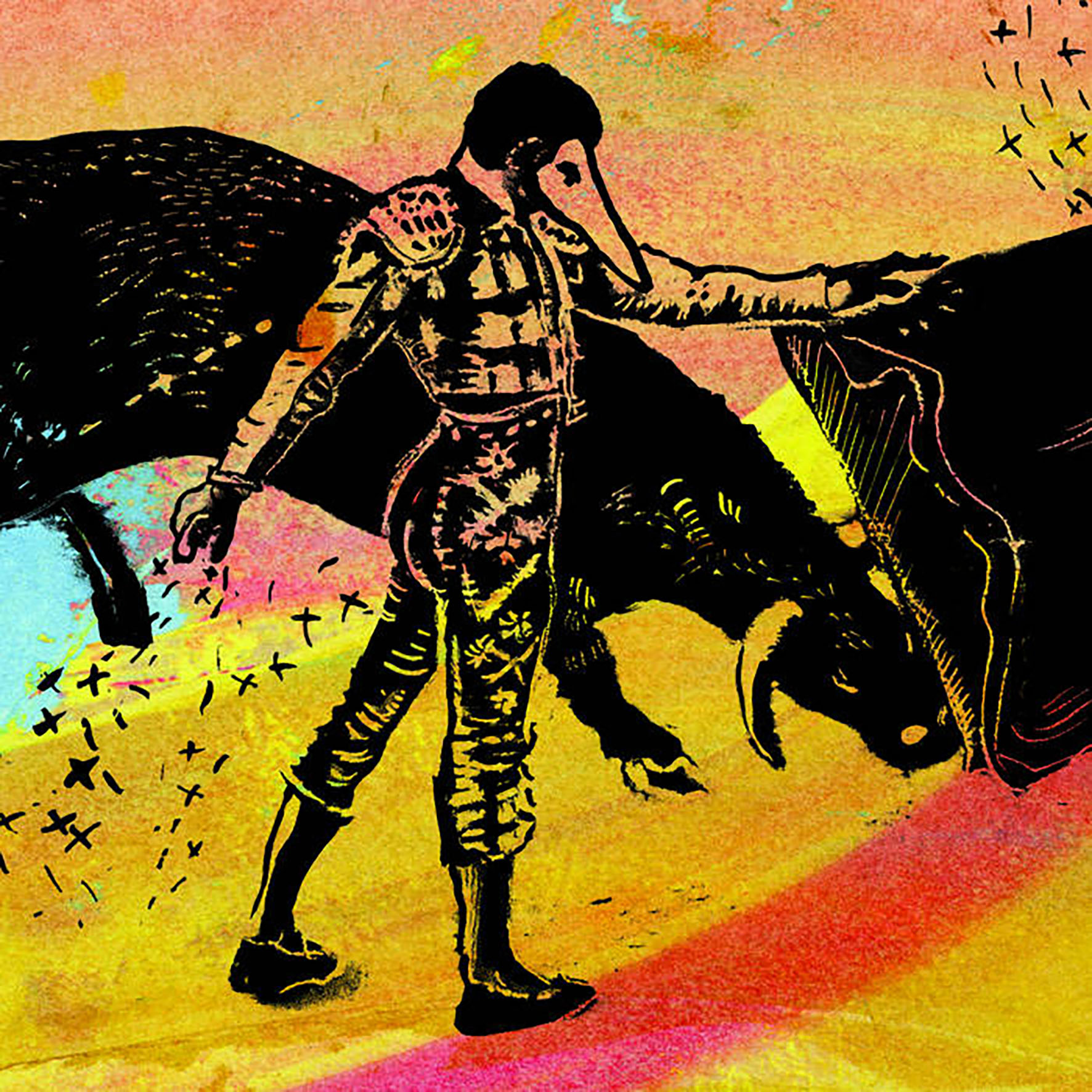 I was not expecting 2014's odds n' ends collection Fight for Your Dinner to ever have a sequel, so this latest batch of eclectic covers, one-off experiments, unusual collaborations, and orphaned songs came as a very pleasant New Year's Eve surprise last December. While the covers are a bit less leftfield this time around (no Missy Elliott), they compensate by being even better, as the duo's sublime interpretation of two '80s Prince classics is one of the best goddamn things that they have ever recorded. The album also features one hell of an excellent tribute to the late Jack Rose, reworkings of songs by Pixies and Amon Düül II, a homemade electronics experiment, and a six-year-old's bold vision for the perfect pop song. Given the album's freewheeling randomness and the focus upon previously unreleased pieces, one could be forgiven for thinking that Fight For Your Dinner II is strictly one for the band's most devout fans, but it is extremely rare for Big Blood to release anything that does not feature at least one absolutely essential song and this one has several (as well as some great cover art). Of course, I am admittedly speaking as one of the aforementioned "most devout fans," but I still believe it is an objective fact that there is an impressive amount of revelatory material here. And that anyone left cold by the "When Doves Cry/I Would Die For You" cover should be extremely concerned that their ears may be broken.
I was not expecting 2014's odds n' ends collection Fight for Your Dinner to ever have a sequel, so this latest batch of eclectic covers, one-off experiments, unusual collaborations, and orphaned songs came as a very pleasant New Year's Eve surprise last December. While the covers are a bit less leftfield this time around (no Missy Elliott), they compensate by being even better, as the duo's sublime interpretation of two '80s Prince classics is one of the best goddamn things that they have ever recorded. The album also features one hell of an excellent tribute to the late Jack Rose, reworkings of songs by Pixies and Amon Düül II, a homemade electronics experiment, and a six-year-old's bold vision for the perfect pop song. Given the album's freewheeling randomness and the focus upon previously unreleased pieces, one could be forgiven for thinking that Fight For Your Dinner II is strictly one for the band's most devout fans, but it is extremely rare for Big Blood to release anything that does not feature at least one absolutely essential song and this one has several (as well as some great cover art). Of course, I am admittedly speaking as one of the aforementioned "most devout fans," but I still believe it is an objective fact that there is an impressive amount of revelatory material here. And that anyone left cold by the "When Doves Cry/I Would Die For You" cover should be extremely concerned that their ears may be broken.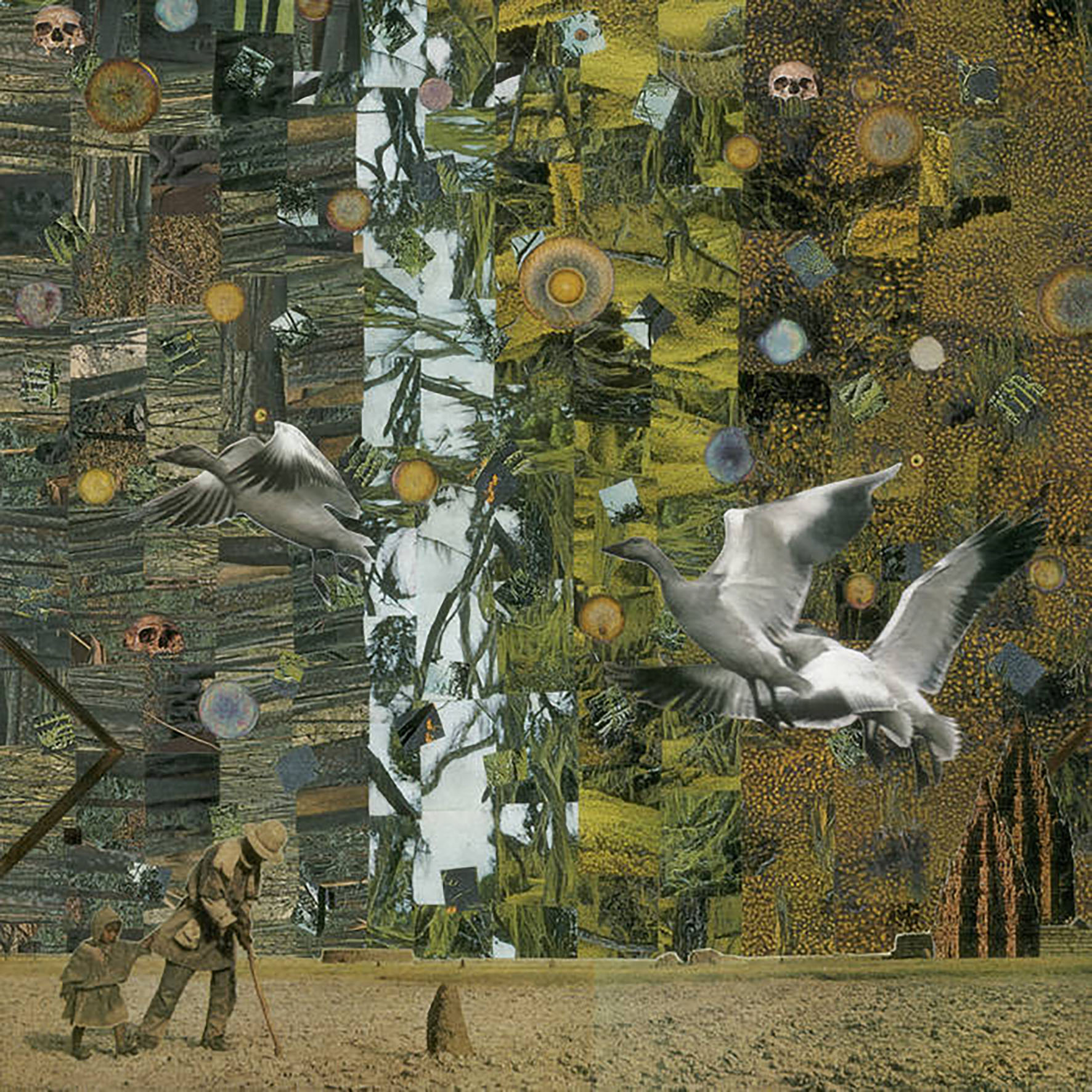 This latest double album from the California-based Fritch is something of a culmination of two separate long journeys, as it took eight misfortune-filled years to complete and it also concludes Lost Tribe's "Built Upon a Fearful Void" series. While I am not necessarily sure that Fritch himself would agree that the end result was worth suffering through the gauntlet of lost hard drives and water-damaged tape reels that he had to navigate to get to this point, Built Upon a Fearful Void nevertheless meets my dauntingly high expectations for any major new statement from the composer. That said, I am certainly curious about how much the album changed between the ruined tape reels and Fritch's decision to abandon "what remained of the salvaged material" and "rerecord the album entirely using only faint flickers of the old tapes and cassettes." On one hand, some magic simply cannot be recaptured, yet that loss is balanced by the fact that Fritch's work seems to only get better and better with each passing year. In any case, anyone who fell in love with Fritch's work from 2019's Deceptive Cadence will likely love this album too (particularly its first half), as Built Upon a Fearful Void is another impossibly rich and vivid plunge into a dreamlike and cinematic vision of bittersweet Americana (and some other very likable other things as well).
This latest double album from the California-based Fritch is something of a culmination of two separate long journeys, as it took eight misfortune-filled years to complete and it also concludes Lost Tribe's "Built Upon a Fearful Void" series. While I am not necessarily sure that Fritch himself would agree that the end result was worth suffering through the gauntlet of lost hard drives and water-damaged tape reels that he had to navigate to get to this point, Built Upon a Fearful Void nevertheless meets my dauntingly high expectations for any major new statement from the composer. That said, I am certainly curious about how much the album changed between the ruined tape reels and Fritch's decision to abandon "what remained of the salvaged material" and "rerecord the album entirely using only faint flickers of the old tapes and cassettes." On one hand, some magic simply cannot be recaptured, yet that loss is balanced by the fact that Fritch's work seems to only get better and better with each passing year. In any case, anyone who fell in love with Fritch's work from 2019's Deceptive Cadence will likely love this album too (particularly its first half), as Built Upon a Fearful Void is another impossibly rich and vivid plunge into a dreamlike and cinematic vision of bittersweet Americana (and some other very likable other things as well).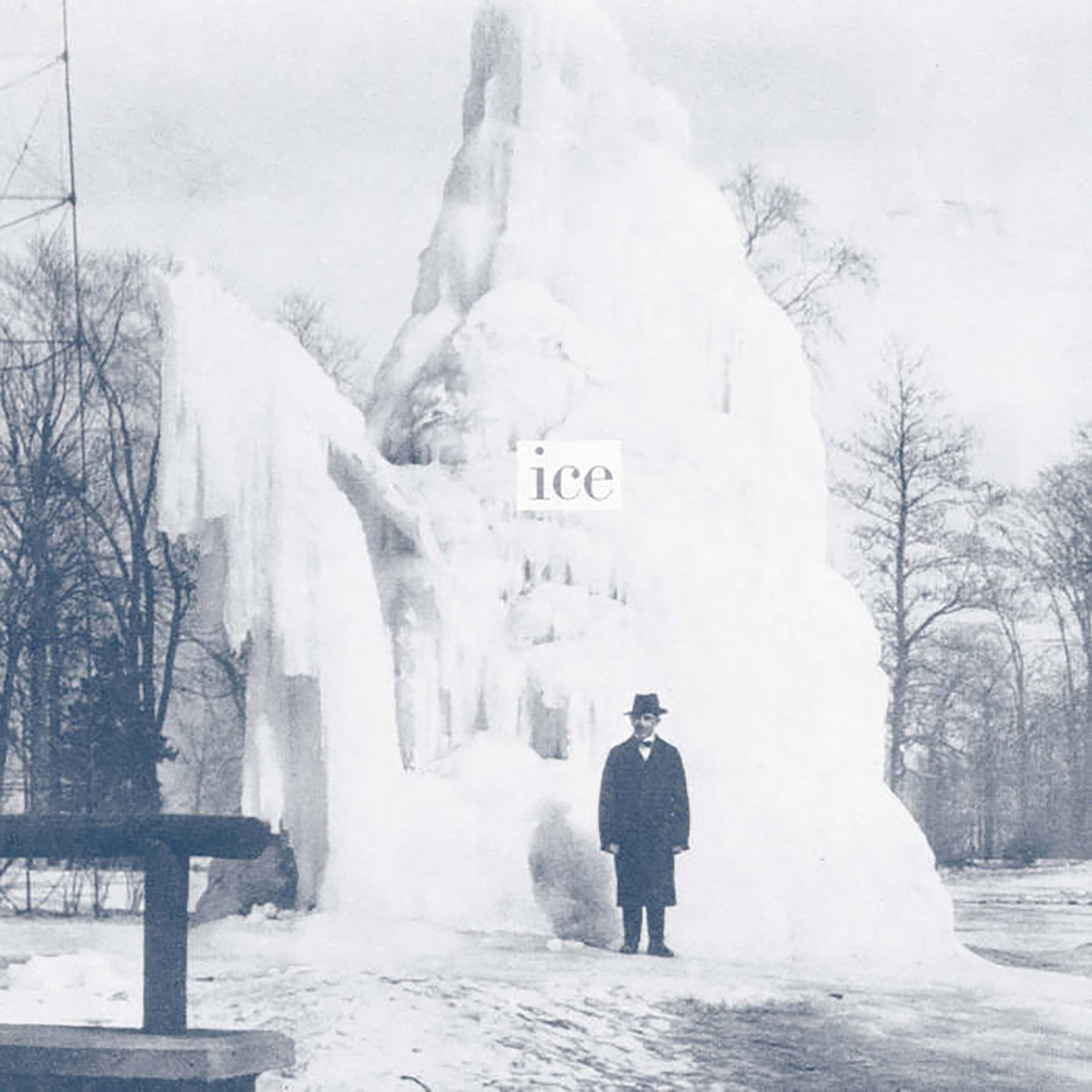 Back in 2008, Steve Roden quietly released one of my favorite ambient albums of all time in a signed limited edition of 250. Of course, I did not realize it at the time, so it took another decade or so before Stars of Ice finally made its way to my ears. Happily, however, Room40 has now reissued Roden's hauntingly beautiful collage of obscure and antique Christmas records, which will hopefully nudge many more receptive ears towards this modest, one-of-a-kind masterpiece. While I am sure I would have greatly enjoyed the original album if I had heard it when it was first released, it is worth noting that my appreciation for texture has evolved considerably over the years, so maybe Stars of Ice uncannily got to me at precisely the right time. In fact, I wonder how significant a role Roden himself has (indirectly) played in my shifting tastes, as he has always been ahead of his time in regard to celebrating details and nuances (as well as inventively repurposing "non-musical" sounds) and we seem to be in the midst of a textural renaissance at the moment. That said, most of Stars of Ice is as nakedly beautiful as music can get, so the quavering murkiness, crackling and popping vinyl, and pleasantly lapping waves of hiss are mere icing on an already gorgeous cake. This is an absolutely brilliant and magical album.
Back in 2008, Steve Roden quietly released one of my favorite ambient albums of all time in a signed limited edition of 250. Of course, I did not realize it at the time, so it took another decade or so before Stars of Ice finally made its way to my ears. Happily, however, Room40 has now reissued Roden's hauntingly beautiful collage of obscure and antique Christmas records, which will hopefully nudge many more receptive ears towards this modest, one-of-a-kind masterpiece. While I am sure I would have greatly enjoyed the original album if I had heard it when it was first released, it is worth noting that my appreciation for texture has evolved considerably over the years, so maybe Stars of Ice uncannily got to me at precisely the right time. In fact, I wonder how significant a role Roden himself has (indirectly) played in my shifting tastes, as he has always been ahead of his time in regard to celebrating details and nuances (as well as inventively repurposing "non-musical" sounds) and we seem to be in the midst of a textural renaissance at the moment. That said, most of Stars of Ice is as nakedly beautiful as music can get, so the quavering murkiness, crackling and popping vinyl, and pleasantly lapping waves of hiss are mere icing on an already gorgeous cake. This is an absolutely brilliant and magical album. 
